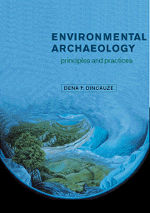Book contents
- Frontmatter
- Contents
- List of figures
- List of tables
- Preface
- Acknowledgments
- Glossary
- PART I INTRODUCTION
- PART II CHRONOLOGY
- PART III CLIMATE
- PART IV GEOMORPHOLOGY
- 9 LANDFORMS
- 10 LANDFORMS OF SHORES AND SHALLOW WATER
- Case Study: Landform reconstruction at Laetoli, Tanzania
- PART V SEDIMENTS AND SOILS
- PART VI VEGETATION
- PART VII FAUNA
- PART VIII INTEGRATION
- References
- Index
10 - LANDFORMS OF SHORES AND SHALLOW WATER
Published online by Cambridge University Press: 20 January 2010
- Frontmatter
- Contents
- List of figures
- List of tables
- Preface
- Acknowledgments
- Glossary
- PART I INTRODUCTION
- PART II CHRONOLOGY
- PART III CLIMATE
- PART IV GEOMORPHOLOGY
- 9 LANDFORMS
- 10 LANDFORMS OF SHORES AND SHALLOW WATER
- Case Study: Landform reconstruction at Laetoli, Tanzania
- PART V SEDIMENTS AND SOILS
- PART VI VEGETATION
- PART VII FAUNA
- PART VIII INTEGRATION
- References
- Index
Summary
The coast of a continent is a great boundary between two realms, land and water. Along this, as along other boundaries, two very different realms must adjust to each other, and conflict occurs.
FLINT AND SKINNER 1974: 245The conflict of land and water creates the dynamism characteristic of shorelines, whether of rivers, oceans, or lakes. Humans are drawn to water because it is essential to the maintenance of organic life, and is therefore the location of basic resources. Archaeological sites on the shores of lakes and oceans present special opportunities and challenges for paleoenvironmental studies. Sites near water typically exhibit preservation conditions conducive to the survival of a range of organic materials. The sediments in and near them are likely to be organically enriched as well and hence excellent sources of climatic proxies and remains of plants and animals. Landforms shaped by waves and currents are typically informative about past climatic and geotectonic states and conditions. The dynamism of sedimentary regimes typically creates stratified sites, which are nevertheless subject to frequent erosion.
COASTAL GEOMORPHIC CONCEPTS AND PROCESSES
Landforms at the edge of water, like those on land, are shaped primarily by processes in the atmosphere, geosphere, hydrosphere, and cryosphere. The biosphere's influence is expressed mainly at small, local scales. The large-scale processes most responsible for changing the elevational relationships between land and water, and thus initiating erosion and landform evolution, are tectonism and climate change, and their combined product – eustasy.
- Type
- Chapter
- Information
- Environmental ArchaeologyPrinciples and Practice, pp. 227 - 250Publisher: Cambridge University PressPrint publication year: 2000

